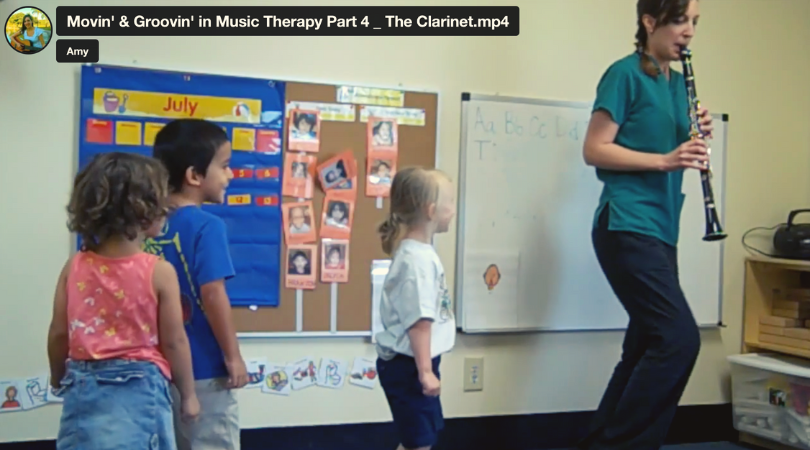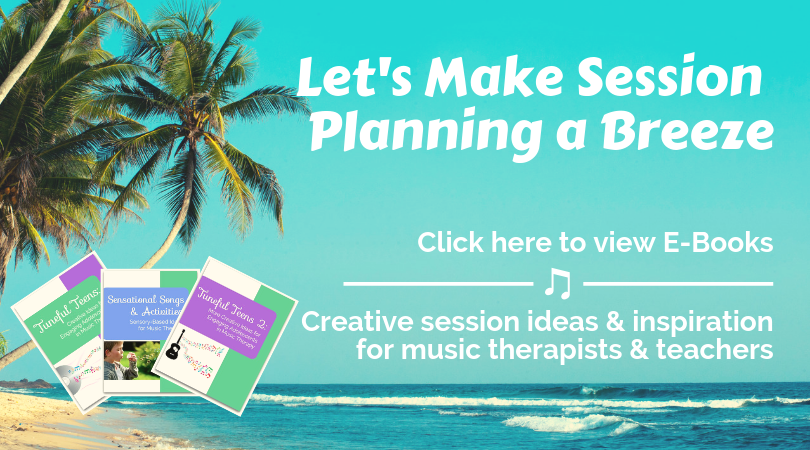
I love supervising practicum students because it reminds me to examine each and every aspect of clinical practice.
Everything – from their musical presentation, to communicating with clients, to transitions – is observed and assessed when students begin leading musical experiences.
Not only am I evaluating my practicum students’ skills, it reminds me to evaluate my own clinical skills.
One thing I’m reminded of, is the importance of changing up our musical accompaniments.
In school, we were taught to accompany ourselves on three social instruments – guitar, piano, and autoharp (yes, autoharp).
So when I first started working as a music therapist, I stuck with those familiar instruments. Well, to be honest, I stuck with guitar and keyboard because the autoharp was way too heavy.
As I’ve worked with older age groups (middle and high school students), I’ve expanded my accompaniment instruments and background music, and I would invite you to do the same.
Although I definitely still use the guitar and piano to accompany myself, I also mix in:
Maraca – Simple, but catchy and rhythmic.
My clarinet – Watch this awesome video where I use the clarinet to facilitate a movement experience with young children.
Keyboard with auto accompaniment – Hear how the auto accompaniment adds to this musical experience in a class with students who have severe and profound disabilities. As an added bonus, the auto accompaniment feature allows you to have your hands free to facilitate and gives you a multitude of styles to choose from.
Drum – Watch this video where I accompany myself on drum while singing “I Ain’t Gonna Paint No More.”
Hip hop/rap beats – which I explain about here and here. Oh and here too.
Singing a cappella – It’s simple. But, if my clients are used to me always having an accompaniment instrument, this is engaging because it’s novel.



Leave A Comment